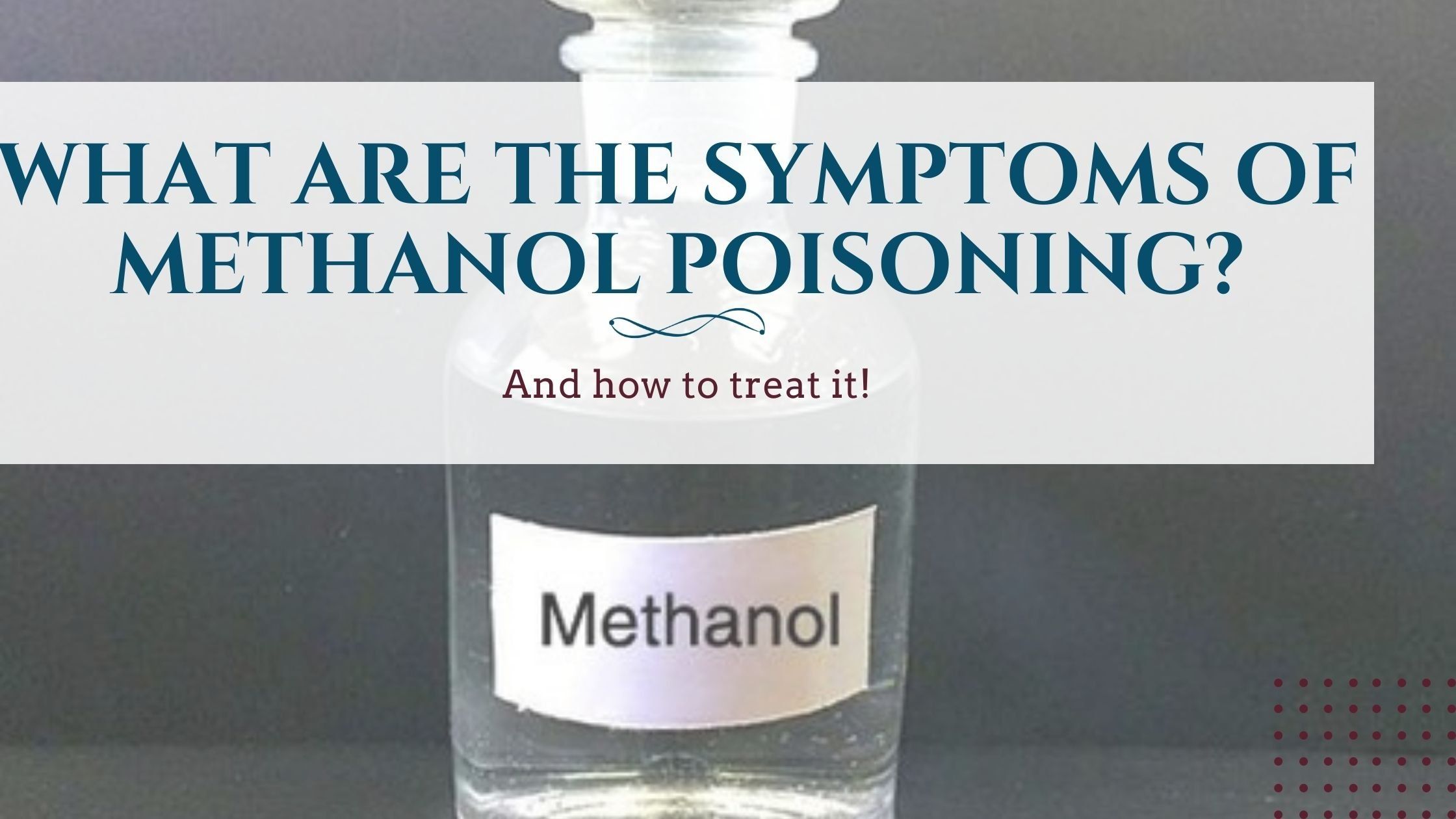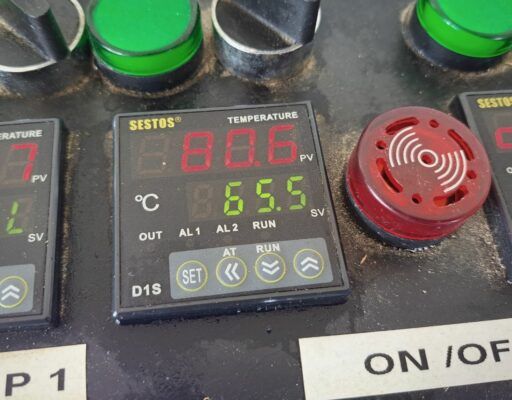Safety
What Are The Symptoms Of Methanol Poisoning (And How To Treat It!)
Methanol is the simplest form of alcohol and is closely associated with ethanol, which is mostly found in wine, beer, and spirits.
However, methanol is much more toxic and could lead to death when left untreated.
The following symptoms will manifest themselves as the first signs of methanol poisoning:
- Poor or no coronation
- Abdominal pain
- Nausea
- Vomiting
- Decreased level of consciousness
- Blurred or decreased vision
- A specific smell on the breath
- Headache
- Dizziness
- Confusion
Fortunately it’s also possible to treat methanol poisoning if caught early enought.
Read on as in this article, we’ll explain how methanol poisoning works and how to treat it.
Table of Contents
What is Methanol?
Also known as methyl alcohol or wood spirit, methanol is the simplest (shortest chain) of alcohols which is one-part carbon, one-part oxygen and four parts hydrogen.
It is not safe for human consumption and it is mostly used in industrial products such as fuel, solvents, and most commonly in windshield washer fluid.
All forms of alcoholic drinks do have methanol but in commercial spirits, the amount of methanol present is very low that it doesn’t cause any potential health risks. Fruits such as apples, oranges, and grapes also contain some amount of methanol but not large enough to cause problems in the body.
Methanol is produced during the fermentation process in wine or beer-making. It is created in the brewing process and becomes concentrated by distillation.
When methanol becomes concentrated not separated from ethanol correctly, and ingested in large amounts, it can be dangerous to human health, and can even cause death.
What is Methanol Poisoning?
Methanol poisoning occurs when too much methanol is ingested and can’t be processed by the human body.
It may result from drinking homemade distilled rum, whiskey, brandy and other spirits, or accidentally ingesting windshield washer fluid, gasoline additives, and our products found in the home or workplace.
Methanol poisoning is rare but there have been occasions where large numbers of people are hospitalized or have died due to methanol poisoning from drinking bootstrap alcohol. These drinks have been made in homes and by backyard industries, where methanol levels in homemade distilled alcohol are alarmingly large. Methanol is colorless, tasteless, and odorless, and can be impossible to detect when an individual consumes it in beer, gin, rum, and other homemade alcoholic drinks.
What are the Symptoms of Methanol Poisoning?
The symptoms of methanol poisoning are similar to the signs of being drunk. They develop over a course of several hours, and those who’ve ingested dangerous levels of methanol will not immediately have manifested symptoms of methanol poisoning.
Typically, symptoms will start to appear in 12 to 24 hours from ingestion of methanol.
The following symptoms will manifest themselves as the first signs of methanol poisoning:
- Poor or no coronation
- Abdominal pain
- Nausea
- Vomiting
- Decreased level of consciousness
- Blurred or decreased vision
- A specific smell on the breath
- Headache
- Dizziness
- Confusion
Large amounts of methanol can cause blindness and even death. Methanol is metabolized in the liver and the retina and thus explains why the chemical causes vision problems.
Methanol causes these health problems and/or death because methanol converts to formaldehyde in the body, then formic acid, making the body’s blood acidic, causing symptoms and toxicity.
How Much Methanol Does it Take to be Poisonous?
Some beers, wines, and spirits do have small amounts of methanol but are hardly dangerous for human consumption.
An oral intake of 3–12 g/person of pure methanol can cause blindness
Any ingestion of more than 10ml of methanol can cause serious health problems.
The lethal human dose of pure methanol was estimated at 15.8–474 g/person in recent research. They determined the median lethal amount is 56.2 g/person as the median
How to Treat Methanol Poisoning?
Emergency treatment must be administered immediately when a suspected case of methanol poisoning is detected.
It can be difficult to gauge the signs of methanol poisoning at first glance since it resembles the effects of ingesting alcohol, such as loss of consciousness, loss of coordination, vomiting, and abdominal pain.
A lot of the victims of methanol poisoning do not seek help right away, which can lead to bigger problems such as potential blindness and sudden death. It is important to note that when consuming homemade distilled alcohol or accidentally ingesting windshield washer fluid and other gasoline additives to seek emergency care immediately once signs and symptoms appear.
Early treatment of methanol poisoning will increase the likelihood of a good outcome. Methanol poisoning should be treated with fomepizole.
If this is not available, ethanol can be administered intravenously or orally if need be.
Both of these chemicals can act or reduce the actions of alcohol dehydrogenase on methanol, which means these drugs inhibit the formation of formaldehyde in the blood, preventing further toxicity to occur.
Ethanol acts as an inhibitor by blocking the bond of methanol in the blood, and thus, is an effective treatment for methanol poisoning. In mild cases, taking commercial gin with large amounts of ethanol can be a possible antidote.
Hemodialysis is a treatment for organ damage or for high degrees of acidosis in the body.
Conclusion
Methanol poisoning is a serious condition that can cause death and potential blindness for those who survive.
While commercial alcohol drinks are usually safe to drink as they have technologies to remove and separate methanol from ethanol, homemade distilled spirits can produce large amounts of methanol rather than ethanol when not done correctly.
Methanol poisoning can also occur when accidentally ingesting gas and additives, windshield washer fluids, and other industrial cleaning solvents.
Common symptoms of methanol poisoning include vomiting, loss of coordination, loss of consciousness, difficulty breathing, blurred vision, weakness, and abdominal pain. At the first onset of symptoms, a person suspected of methanol poisoning must head to an emergency room immediately to receive the proper antidote and treatment.









I always wondered how guys on the TV show moonshiners keep from poisoning people with their homebrew. I would have thought that their liquor would be dangerous to drink I now realize that the amount of methanol produced is probably small. I still rather drink my hooch from a bottle purchased at a liquor store. Thanks for the information